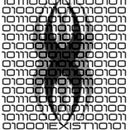Introduction: Etching and Working With Meteoric Iron
Meteoric iron is a wonderful substance. Many cultures used it (such as the Egyptians and Inuit) as a source of iron before extracting iron from ore was invented.
It is naturally very hard, keeps a good edge, and is resistant to tarnish. It is also very expensive although surprisingly affordable in small quantities. Go ebay!
It is mostly composed of two different alloys of iron and nickel: kamacite and taenite.
http://en.wikipedia.org/wiki/Meteoric_iron
The crystals of these alloys have differential resistances to acid. As a result, you can etch an iron meteorite with a strong acid to make the crystal structure visible.
This process is fairly well documented on youtube, which is where I researched my technique.
Step 1: Working With Meteoric Iron
There are a few guidelines to follow when working with meteoric iron:
0) Power tools are dangerous. Acid is dangerous. Wear goggles at all times. If you don't know how to use a tool, practice first.
1) High temperatures may damage the crystal structure. Do not heat it unnecessarily. Use hand tools if possible.
2) If you use a vice, pad it so that the vice metal does not contact the sample, to avoid creating nicks in the surface.
3) The sample must be extremely polished before applying acid. Fine grit sandpaper is a must. A polishing bit for a dremel tool is quite handy, so is polishing paste and a soft cloth for the final touches.
4) Try to create something as close as possible to the original shape of the sample, it will save you a lot of effort. This stuff is not so easy to cut, although if you're lucky enough to have a very small lathe (I'm not), this is not so important.
5) Meteoric iron is hard. If you try to drill a hole it it, make sure it is very secure, and be prepared for the drill bit to break and fly off in a random direction at high velocities. My safety goggles have a small piece gouged out where they stopped the prodigal drill bit from blinding me. WEAR GOGGLES.
Step 2: Etching
This is not that hard, but please follow safety guidelines. If in doubt, look up the safety data sheet for the acid you will be using. Don't be lazy; do your homework.
You will need:
-Strong acid. I used 30% phosphoric because it's easy to get ahold of as a "PH UP" additive for aquariums. Sulfuric acid is sometimes sold for this purpose as well and should work. Nitric acid is very dangerous, but should work as well. Ferric chloride may or may not work.
-Methyl, ethyl, or isopropyl alcohol, with no water content.
-Water. If you have distilled water, use it. If not, don't worry.
-Bucket
-A glass container with a good strong lid. A mason jar is good. Do not use metal or plastic.
-Safety glasses, gloves, and a lab coat or old clothing.
The procedure itself is trivial. You place the sample in the jar. You add just enough acid to fully cover it. You wait, then you gently swirl the jar until the sample rotates in some way (so that we expose all sides equally). You wait some more.
When you are satisfied with the visibility of the crystals, fill a large bucket with water. Then, pour the acid out of the jar into the bucket. DO NOT pour water into the acid, you may cause a violent and dangerous reaction. Fill the now empty jar with water and dispose of it.
Now, let the sample soak in water for 10 minutes. Replace the water, stir, and repeat once or twice. This is to remove trace acids on the sample. Now, repeat the same process using one of the alcohols instead of water. This helps remove residual acid as well, but is mainly to help replace water present in micro fissures in the sample with alcohol which will evaporate out faster.
Remove the sample, and let dry. If this is a piece for display, store it under glass with a desiccating agent such as sodium silicate.
I used this technique to make a pendant. It is most certainly not stored under glass, but seems to hold up very well against the elements nonetheless, so don't be afraid to make items for everyday use out of this interesting substance.
(The necklace is sterling silver, purchased by weight at the same mineral collector's faire I purchased the sample)













